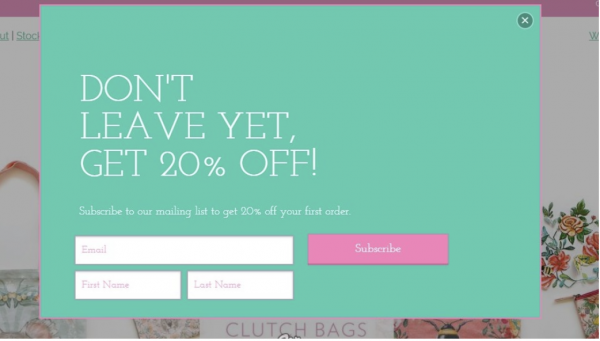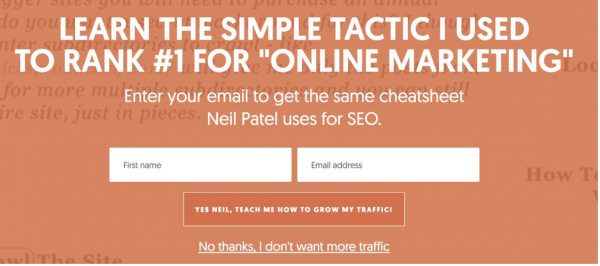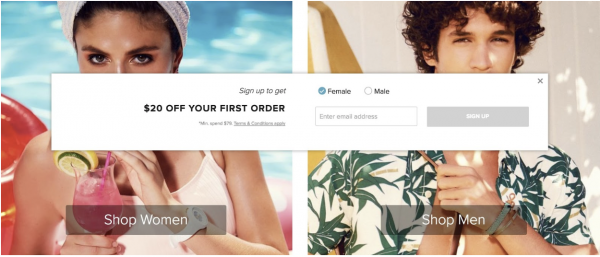Want more customers? Of course you do!
But it’s not just a matter of attracting them to your website. In fact, 92 percent of customers who come to a site for the first time don’t make a purchase. The come, they look around and they leave again. A large percentage never return.
To turn website visitors into buyers, you have to give them a reason to connect with you.
Enter the lead magnet.
What is a lead magnet?
The cynics amongst us may call a lead magnet a bribe. I prefer to think of it as incentive. It catches the buyer’s interest, gives them something for nothing and draws them closer to making a purchase and becoming an ongoing customer.
Lead magnets are offered by businesses of all sizes. Some examples include:
- A chiropractic business offering your first checkup free
- Three free meals from a food delivery service
- Your local Mexican venue holding $5 Taco Tuesdays
- A wedding photographer offering a free eBook on How to Reduce Wedding Day Stress
- A gym offering a free two week trial to new members
- Kids Eat Free at holiday destination resort hotel
- $20 off the first shop for retail customers
- An airline website offering a competition to win a free trip to Fiji
- A baby sleep coach offering a free 15 minute phone consultation

[HelloFresh offers free meals as part of their lead magnet strategy]
Each of these leads will draw the customer your way, opening the door to a sale or to repeat business.
As much as possible, your lead magnet should involve your customer handing over their email address. This means you can add them to your database and continue to engage with them, offering them further incentives to join / buy / sign up.
In this post, I’ll be looking in detail at online lead magnets that you can add to your website.
Why you need a lead magnet
As I just mentioned, providing lead magnets is a tried and tested strategy for growing your sales.
Beyond that initial sale, however, your lead magnets are important for building your subscriber database. This list of customer details should always be increasing, in order to maintain the balance between fresh and stale leads.
Simply approaching people and asking for their email address or phone number isn’t going to be effective. Instead, you have to create something of value. The more they want it, the more likely they will be to hand over their information.
Your lead magnet should be like pollen to a bee. You are offering exactly what your target audience wants and making it easy for them to get it. Hopefully, once they get a taste, they will be back for more.

[Homewares website LaLaLand offers the incentive of 20% off the first purchase in return for signing up to their newsletter]
Five questions to ask yourself
Before creating a lead magnet, this is what you need to consider:
1.What can I offer my users / customers?
Generally speaking, it can be difficult to get a customer to sign up to an email list without offering them something in return. Ask yourself what kind of deal / content you can tempt them with in order to get their email address. Perhaps it is a one-page information sheet, perhaps it is a discount or a two for one deal. No matter what it is, it has to go at least part of the way to solving their problem.
2. Would I want this offer?
If you would turn your nose up at it, don’t offer it to your customers! Think about what would make you click, or better yet, contact some existing customers and ask what would draw them towards sharing their details.
3. Am I giving away too much?
Your lead magnet should entice your customers to buy, not give them all the information / product they need for free. Do a cost analysis to make sure you can afford what you are offering. Limit the information you share and include a strong call to action to remind your customer to visit you again.
4. Do I have a plan for my email subscribers?
There’s not much point creating a lead magnet and building up your database if you don’t send out regular emails! Avoid putting the cart before the horse and create an email marketing strategy before you pull together your lead magnet.
5. Does the language of my lead magnet popup / module make my offer irresistible?
FREE is the favourite word of pretty much everyone on the planet! You can also include some power words that draw website browsers to your lead magnet.
For example:
- Sensational * Problem-solving
- Limited time * Eye-opening
- Jackpot * Six-figure
- 500 percent more * Unknown secrets
- The key to * Unlimited possibilities
- Jam packed * Fix your…
Bringing it all together
Once you have come up with a strategy for your lead magnet, there will be some work involved at the back end to set it up.
This involves creating the promo code, eBook, templates, cheat sheets or other content (if relevant) and also the welcome email for your customer to receive once they have signed up. When your lead magnet is content based, make sure you share a pdf so it can’t be edited and ‘stolen’ by anyone else.
Next, you need to create an enticing design for your website. Use eye-catching text and a strong call to action. Choose colours that stand out and grab your customer’s attention.
You will also need your web developer to add the lead magnet notification to your page so that customers can see it. And of course – test it! Make sure everything works the way you expect it to.
Where to put your lead magnet
You have a couple of options as to where to put your lead magnet. Some websites create a popup which appears on screen straight away. Others have one which appears only after the client has scrolled a certain distance down the page.
In some cases, you can create a lead magnet only for people who have come to you from social media or for people who visit a certain page on your website.

[US-based marketer Neil Patel blocks all his content with a popup as soon as visitors reach his site (he also make his popup easy to get rid of)]
Lead magnets can be embedded within a page or they can appear at the bottom corner. They can also pop up when a customer is about to leave a site.
So where should you put yours? According to Shaun Whynacht at InfusionSoft, go for a popup. While people may say they are are annoying, this is because they have come across popups which do not offer value. They also may have encountered popups which are impossible to get rid of.
Shaun says (and I’m inclined to agree) that popups which don’t allow for easy exit will result in more people leaving your site without taking any action (aka a higher bounce rate), which is never a good thing.
When placing your popup, make sure it has a visible ‘X’ or ‘Close’ button. Be strategic about where your popup is located and which user actions makes it appear.

[The Iconic puts their lead magnet front and centre when you visit the home page]
Measuring effectiveness
Before you implement a lead magnet strategy, take stock of your bounce rate, your customer database figures and your average weekly conversions.
Keeping an eye on these will help you figure out if your lead magnet is working. If website traffic and new subscribers start to drop off, don’t abandon your plan altogether. Instead, tinker with the placement and wording of your lead magnet popup or module.
If possible, try some A/B testing and see which wording and formatting draws in the most sign-ups.
The final secret: FOLLOW UP
Now you have your nice juicy lead – it’s time to squeeze out the $$$.
Capturing a lead through a lead magnet is only the first step. What’s more important is getting the sale.
To turn your lead into a customer, create an ongoing dialogue and follow the tested philosophy of give, give, give, ask.
For example, a gym-based business may find the following strategy effective:
- Original lead magnet – Five ways to lose weight faster eBook sent via email
- Follow up email – Thanks for downloading the book + free training session offer
- Follow up email – Reminder of free training session offer
- Follow up email – Follow up to free training session and membership offer (first month free)
- Regular newsletter with fitness, nutrition and weight loss tips
- Offer two free training sessions in return for referring a friend
This is a basic example as you can create different ‘paths’ based on the lead’s actions. The key is to keep up the dialogue and remind your customer why they will benefit from your product or services.
Now you know what a lead magnet is, do you need help getting started? Get in touch and let’s discuss how we can effectively implement this strategy for your business.




